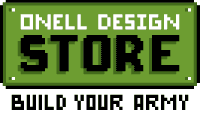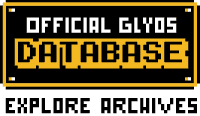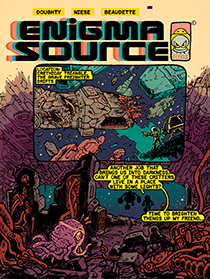When Matt and I started working together, one of the first things we created was a blind box series of toys for a company we both used to work for called Beantown Toys. In addition to developing characters and designing packaging, a critical part of our duties was constructing color mechanicals for overseas production. These are basically PDF blueprints for the factory workers to follow. Matt would draw the line art, I'd convert them to vectors, and then we would digitally paint the figures. This became not only the launching pad for many of our current methodologies, but it was also the start of our late-night insanity trying to make deadlines for China. Fact: a mechanical is not ready to be submitted until it has been tweaked one last time between the hours of 2:00 and 5:00 AM. Hence, Formanchies and other horrid midnight snacks were created and consumed all too often.
We've developed a fairly steady system of generating Glyos mechanicals over the years. Matt will put together the initial palette of colors (usually connected to a specific story arc), then we'll play around with the PMS codes (Pantone Matching System... not the most regal acronym for the rainbow) and see what color families work well together. I'll make a master page displaying the full wave of figures and we'll proceed to tweak it all until everything comes together as a unit. We're normally together for the leg work of this, but often we'll spend days or weeks editing the line up, leading to 50+ strings in our email conversations about the outer eye color of a Pheyden. It can become all consuming- since we assemble these batches so far in advance, we constantly need to switch gears and refocus on what we started months ago to get ready for the next release. It's a cyclical, challenging process for sure, but in the end very rewarding. As satisfying as the colors look on our monitors, nothing compares to holding a production figure in natural lighting.
I love making cards and stuff for my nieces to color, and recently put together a mini coloring book featuring "those 'lil guys I make". This process got us thinking over here. In the spirit of celebrating 5 years of Glyos, we'd like to share with everyone our actual production mechanical files, to maybe have some fun playing around with. Included below is a hi-res/printable PDF featuring our first production characters, waiting to be vandalized via computer, marker or crayon. I plan on posting a few more of these type of entries (with MUCH less banter), and if you guys really get into it, we'll release all the mechanicals we've done to date. What would you like to see next?
GlyosMechanical-Pheyden-Exellis.pdf














I think it's pretty safe to say that we want to see anything you guys are willing to show us! BRING IT!!!!
ReplyDeleteThanks, Marcus! :D
Thanks Charles! Marcus is the Mech King!
DeleteSo Aves' limbs ARE a different colour, and I'm not just crazy!
ReplyDeleteThis is incredibly interesting, and I had no idea such a thing existed! I would love to see all the colours ever, maybe as one big PDF file or a ZIP/RAR archive of JPG/PNG images? (I understand that a blog post would be pretty crazy!) And then including the new colours files along with each new drop. It would really serve good to be able to see all the new colours in digital form, since a lot of the time photos aren't that clear (see: Task Force Volkriun and Neo Voss).
So this solves one question I've had, about how the colours are made, but I still have one more: What pieces are included in each mould?
For example: Is the there the same mould for Pheyden/Sarvos/Etc. (though clearly a Pheyden-only mould exists, as well), and that's how Extra Sets are made, or are Extra Sets their own mould? I always found it fascinating how Govurom's brainy noggin was attached to the Axis Joint mould, though not a part of that set in-store, and wondered what else was like that.
I doubt you'll ever get an answer here. This has been a pretty guarded secret, and ties pretty closely to the business as a whole. Doctor Kent has answered a few questions relating to the molding process with very vague answers followed with "And that's all I can tell you."
DeleteWell that sucks. It is, by far, what I've ALWAYS been most curious about. As I said, I always found it interesting that Govurom's head was part of the Axis Joints (as shown in early blog posts when the Axis Joint Set was released), and wondered how Extra Sets were made. I'm not asking for any sort of secret cookie recipes or anything, I just want to know what fits in each pan.
DeleteNo secrets about the mold distribution. The Extra Set is indeed its own mold, consisting of the following:
Delete-Sarvos head
-Phanost head
-Scar Pheyden head (2 parts)
-Second type Traveler chest
-Second type Traveler pelvis (same as Exellis pelvis)
The original idea was to have this tool be compatible with the original Pheyden/Exellis mold, so that these parts could slide in and a whole figure could be run. Alas, that was not what happened in mold production, and the Extra Set was created as a locked mold, meaning it had to be run on its own. This is why the Extra Set selection finally appeared in the store, because whenever we wanted to run any of those parts, we had "extra" leftover. I dislike wasting things, so we decided to make the parts available.
When we design molds now, communication is very clear, so the efficiency of each tool is higher. The Traveler molds have seen a lot of action, so they have been reconditioned a few times. These actions have resulted in the slightest variations on Pheyden over the years.
Wow. I'm definitely happy to be proven wrong on this one.
DeleteI don't understand a lot about moulding processes, since I write stories and make games instead of making toys, but it sounds like a pretty cool idea to have customizable moulds, so you can have what you want whenever you need it, instead of having leftover parts! A shame it didn't pan out though.
DeleteI have noticed a few variations among the older stuff and the newer counterparts, and I had no idea the Scar Pheyden head was two pieces!
Thank you very, very much for sharing this, and I hope that little behind-the-scenes and "Lost Projects" posts become a regular occurrence again! That's still one of the best things about scrolling through the archive, but there's still so much to explore!
Of course, you will run out eventually of older things to talk about, so maybe to pace yourselves, not having them all once-a-day like these have been, and instead maybe once-a-week or once-a-month, or generally whenever there's an extended period of downtime. Even if it's nothing terribly important or news-worthy, I do love to see a new post on the blog, to know you all are still out there!
I don't know if Matt has access to the technology, but in a visit to the Hasbro HQ they showed off some "gated" molds, that basically you could put in a gate and the injected plastic would go to a different part(In the Hasbro case, a different head for a Transformers mold).
DeleteIt sound like Matt is talking more like a printing press style, where you slide pieces in and out of a dye. Either way, as an engineer this sort of in-depth look is just the bees knees to me. :D
Cool info, Marcus, and thanks for it! Has there ever been a time when what was proposed in the mechanicals just didn't pan-out, or something completely unexpected happened in terms of the colors somehow looking "different" in-hand?
ReplyDeleteI'm sure Marc will chime in here, but we have absolutely received things that looked very different than expected. After 5 years of production, anything that could go wrong, did go wrong at some point. From odd colors to happy accidents, the process is ever evolving.
DeleteWe've grown to accept the hiccups and have become better at making lemonade (when we get the occasional lemon).
One of the most unexpected things when we started production with Beantown was a missed call-out of a PMS code. Even though it was clearly colored white, the number was off and we ended up with a brown snowman Bean.
DeleteWow. Yellow snow, sure, but . . . brown? That's all kinda problems.
DeleteIt'd be really interesting, going along with all the "Lost Projects" and such, to maybe get a glimpse of the "hiccups" and "happy accidents" that have come down the pipe over the years. Sometimes, the errata is just as interesting as the regular stuff, after all!
This is super cool! All the mechanicals for the other figures (my vote would be the Armorvor and Crayboth) would be a great addition to a customizer's arsenal!
ReplyDeleteAny peeks into the actual production methods is always fun times.
Thanks Chris! The Armorvor mechanical was one of the more challenging mechanicals that we have worked on. The core drawing was intense! Marcus made it look really nice though.
DeleteMechanicals for the Gobon! Please! :D
ReplyDeleteComing up later this week!
DeleteThanks!
Whoo! Eff yeah! Thanks, Matt!
DeleteThis is awesome! Great information dump plus fodder for many DIY projects. Please provide mechanicals for the Crayboth, Armodoc and Gobon.
ReplyDeleteThanks Brian! Marcus does an exceptional job creating these, with each mechanical functioning as a bridge of communication with the factory.
DeleteHow does that pms chart work for things like metallics and glow in the dark? Is that just an extra note they get along the process?
ReplyDeleteActually, whole PMS mini books filled with just metallic colors exist! A new one was recently released. The ones we use are at the back of the PMS Solid Coated guide. PMS 877C is the silver we like to use.
DeleteHoly Mother of PVC!! I always figured the Pantone code for Pheyden Blue was a corporate secret -- so I never dared to ask. Now here are the inner workings laid naked for the world to see. These are indeed shocking times we live in.
ReplyDeleteAnd having the clean mechanical outlines in a large scale -- worth it's weight in digital gold! I've been utilizing a Crayboth outline you posted as a GIF some years back, so knowing an update is coming is a huge treat. Thank you, Marc! Just, thank you.
Thank YOU Cappy! More digital glitter coming later today.
DeleteThese are excellent! Thank you SO much for posting these Marc! - I made some up for my special needs students, based on the Destroyator Buildman spec you posted. We used these sheets to assemble and customize a whole bunch of Glyos stuff that you wonderful folks at Onell graciously donated. To facilitate the color design and dyeing process, I "exploded" the figure in our drawings to provide an idea of the different parts. These are beautiful - I will be using these as guides for my students! Again, thank you!!!
ReplyDeleteHa ha! Thanks for posting these. I've printed them out and my 6th grade class is having a ball coloring them in their spare time!
ReplyDeleteSo I wasn't the only one to think of that! I haven't had time yet, but I do sure love colouring pages!
Deletethis is really neat to see
ReplyDeleteThis is too cool. Thanks for sharing!
ReplyDeleteHaha, it is nice to have official templates after years of making my own. This past week has been fantastic. Really enjoy seeing the process of another artist. Any chance of a collected book one day?
ReplyDeleteReminds me I need to get scans of the sketches you and Jesse drew in my sketchbook.